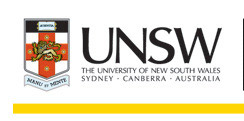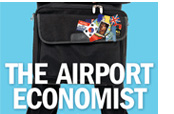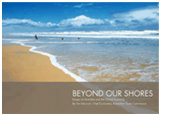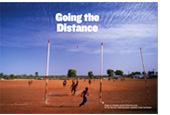Tim Harcourt*
It is more than 30 years since I went to high school in Toronto At the time there was a minority Conservative Federal Government in Ottawa being forced to an election by the Opposition Liberals.
In 2012, the Conservative government is now in majority under Prime Minister Stephen Harper and it is Australia which is experiencing the perils of minority government. In Canada, an unusual situation has also developed where the traditional third party, the New Democratic Party (NDP), has replaced the Liberals as the official Opposition. The NDP has often governed at provincial level, initiated important reforms like universal healthcare, but has never formed government in Ottawa.
In recent years there have been enormous changes in the Toronto skyline and on the waterfront which has been re-developed for commercial maritime pursuits and recreational sailing. The city is also full of new Opera Houses and theatres as well as a range of research centres like the MaRS Discovery Centre near the University of Toronto.
Canada and Australia have a lot in common. Both are federal, geographically dispersed, continental sized countries, with Westminster systems of government and a similar standard of living. The two countries have placed a high priority on developing transportation, industrial infrastructure and social and health services for populations clustered in urban centres.
The historical ties are also strong. There were Canadian diggers at Eureka, a Canadian commander at Gallipoli and cricket was Canada’s national sport at the time Canada became a nation in 1867 (Australian tours to Canada include Don Bradman’s team in 1948). And some French Canadian rebels sent to Australia in convict times set up Sydney’s, “Canada Bay”.
Yet as Glenn Stevens, the Governor of the Reserve Bank of Australia (who is a University of Western Ontario graduate) points out: “It is surprising that Australians and Canadians do not spend more time comparing notes, given the things we have in common.”
Canada like Australia is remarkably diverse. In Eastern Canada, mainly Quebec, the economic focus is east to Europe, in Western Canada in British Columbia and Alberta, the focus is on the Asia Pacific (particularly China and East Asia), whilst the whole country has an eye on the US across its border.
At the Australia Canada Economic Leadership Dialogue that I attended in Toronto recently, the dilemma facing Canada was its closeness to the low growth economies of Europe and North America, whilst Australia by contrast was better connected to the high growth economics of Asia and the emerging world.
But despite our different geographical and trading positions there are clear similarities. The strength of our comparative banking systems left us in good shape during the global financial crisis. Canada and Australia have also experienced similar housing booms and corrections (it’s remarkable how Calgary mirrors the experience of Perth), and Canada’s terms of trade performance has also benefited from commodity price rises in the 2000s.
But what about Australia and Canada’s direct trade relations? Canada is Australia’s 22nd largest trading partner (worth around $3.2 billion in value in 2012) with a strong focus on wine, nickel ores, veterinary medicaments, food and beverage (Capilano Honey and Bakers Delight are success stories) and tourism (Wotif.com and Flight Centre are big in Canada). Major Australian companies with investments and major operations in Canada include Worsley Parsons, Plenary Group, Macquarie Infrastructure Group and Transfield. In fact, on the plane to Calgary workers on their way to Fort McMurray in Alberta’s north (a cold version of the Pilbara) told me Aussies made good bosses based on their experience with Transfield.
At the Toronto dialogue there were suggestion the relationship should be spiced up with minor tariff eliminations, non-tariff barrier reform, an air services agreement and changes to encourage more labour mobility. But the most contentious reforms were the changes to foreign investment, particularly as the Chinese oil giant CNOOC Ltd announced they would take over Nexen in Alberta in a deal worth over $15 billion. The discussion prompted Resources Minister Martin Ferguson who was at the dialogue to say that if the deal went through, then Australia expected a welcome mat to acquire Canadian uranium and also prompted some advice from former Prime Minister Kevin Rudd (a surprise key note speaker on the first day) on handling Chinese foreign investment. It appears Australia could do worse than observe Canada as a test case for foreign investment in the resources sector.
*Tim Harcourt is JW Nevile Fellow in Economics at the Australian School of Business, UNSW and the author of The Airport Economist www.theairporteconomist.com
He studied at Jarvis Collegiate in Toronto and played full back for the Ist XV Rugby team but still can’t skate well enough to play hockey.













No Comments so far ↓
Comments are closed.